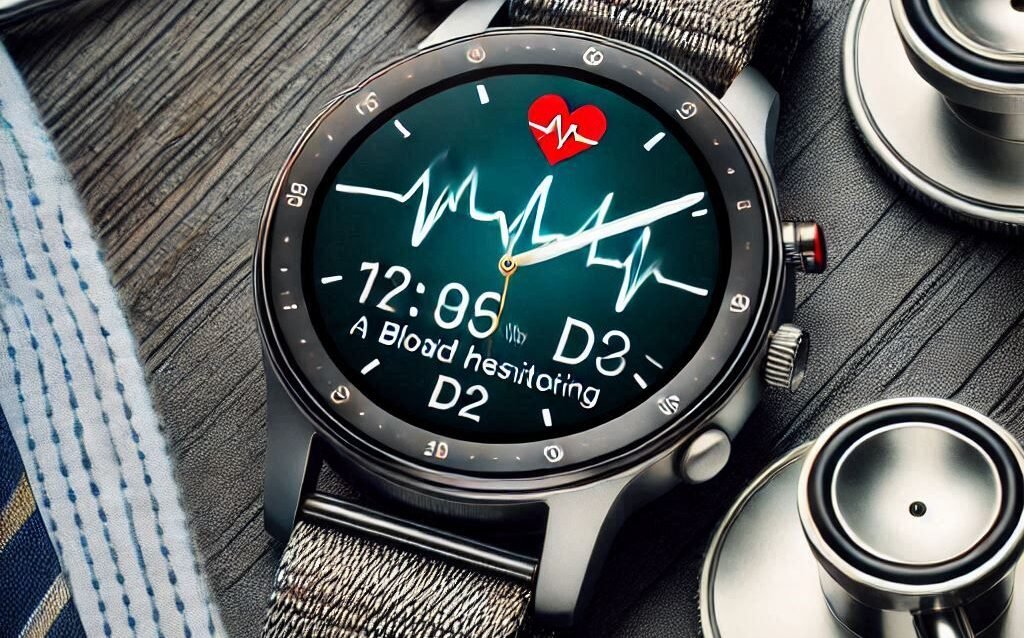Introduction to the Huawei Watch D2
The Huawei Watch D2 represents a significant advancement in the smartwatch market, aligning with the modern consumer’s demand for multifunctional wearable devices. As the smartwatch industry has evolved over the past decade, manufacturers have competed vigorously to not only enhance design aesthetics but also to integrate sophisticated health and fitness features. The transition from basic notification capabilities to comprehensive health monitoring has become a key trend, empowering users to take charge of their wellness.
In this rapidly changing landscape, Huawei has positioned itself as a prominent player by focusing on innovative technology and user-centric design. The introduction of the Huawei Watch D2 furthers this commitment, particularly highlighting its groundbreaking blood pressure monitoring feature. This development reflects the increasing importance of health tracking among consumers. Today, many individuals seek wearables that serve as both fashion statements and essential health tools, leading manufacturers to prioritize such functionalities in their designs.
The competitive landscape that the Huawei Watch D2 enters is characterized by major brands each vying for market share by offering a diversified range of features. While companies like Apple and Samsung have integrated various health metrics into their products, the Watch D2 takes a remarkable step forward by providing real-time blood pressure monitoring—an aspect that directly addresses a crucial need in personal health management.
The incorporation of this feature not only underscores the technological advancements made by Huawei but also sets the device apart from other smartwatches in its class. Consumers increasingly expect their smartwatches to be more than mere accessories; they desire practical solutions that actively contribute to their health and fitness goals. With the Huawei Watch D2, Huawei is poised to meet these expectations and redefine the standards of what a smartwatch can offer.
(Purchase today by clicking on the image)
Understanding Blood Pressure Monitoring Technology
The Huawei Watch D2 incorporates advanced technology to bring blood pressure monitoring directly to the user’s wrist. This innovative feature relies on a combination of sensors and algorithms designed to measure blood pressure accurately. The device typically employs optical sensors that utilize photoplethysmography (PPG), which assesses blood flow through the skin using light. By detecting changes in blood volume, these sensors provide real-time data on the user’s cardiovascular health.
Traditional methods of blood pressure measurement typically require a stethoscope and a sphygmomanometer, often resulting in a more cumbersome experience. In contrast, the Huawei Watch D2 streamlines this process, allowing users to perform measurements conveniently throughout the day. The accuracy of these smartwatch readings is a notable point of consideration. Research has shown that while wrist-based monitors can have variances between devices, sophisticated calibration and sensor technology help ensure that the measurements are reliable and comparable to clinical standards.
The ability to monitor blood pressure while on the go significantly enhances an individual’s ability to manage their health. Continuous tracking can offer vital insights for those with hypertension or other cardiovascular issues. This shift towards personal health monitoring aligns with broader trends in telemedicine and remote patient monitoring, empowering individuals to take greater control of their well-being.
Recent scientific advancements have been pivotal in refining blood pressure monitoring technology. Innovations in micro-sensors, data analysis algorithms, and machine learning techniques have contributed to the improved precision and functionality of devices like the Huawei Watch D2. Ultimately, these advancements herald a new era in health gadgets, combining ease of use and crucial health monitoring capabilities right at the user’s fingertips.
User Experience and Practical Applications
The Huawei Watch D2 is designed with user experience in mind, particularly regarding its innovative blood pressure monitoring feature. Setting up this functionality is straightforward; users simply need to ensure that the watch is fully charged and properly paired with their mobile device. The Huawei Health app serves as a central hub for managing all health-related data, including blood pressure readings. Once connected, users can easily access the blood pressure monitoring feature through the watch’s intuitive interface.
The interface of the Huawei Watch D2 is clean and user-friendly, featuring easy-to-read displays that clearly convey real-time blood pressure data. Users can initiate a measurement by navigating to the health monitoring section, where they will find the blood pressure option prominently displayed. A single tap begins the measurement, and users can expect results within a matter of moments. This simplicity ensures that individuals with varying levels of tech-savviness can effectively utilize the feature.
For individuals with hypertension, the ability to monitor blood pressure in real-time is particularly advantageous. The watch allows users to track their readings over time, providing a comprehensive view of their health status. This data can be instrumental in managing their condition, enabling them to identify potential trends or triggers that may cause fluctuations in blood pressure. Moreover, regular monitoring encourages adherence to prescribed treatment plans, as users can better understand how their lifestyle choices impact their health.
In conclusion, the Huawei Watch D2’s blood pressure monitoring feature not only enhances user experience through its approachable design and functionality but also serves as a valuable tool for individuals looking to manage their health proactively. By seamlessly integrating technology into daily routines, this smartwatch empowers users to take charge of their well-being effectively.
Conclusion and Future Implications for Smartwatches
The integration of blood pressure monitoring capabilities in smartwatches, exemplified by the Huawei Watch D2, signifies a transformative shift in personal health management. This advancement not only empowers users to track their cardiovascular health more effectively but also represents a pivotal moment in the evolution of wearable technology. As consumers become increasingly health-conscious, the demand for features that provide comprehensive health insights is likely to escalate. This could lead to wider acceptance of smartwatches as essential health devices, rather than mere accessories.
Moreover, the inclusion of such health monitoring features can potentially revolutionize healthcare practices. By enabling continuous tracking of vital parameters, individuals can proactively manage their health, fostering a culture of preventive care rather than reactive treatments. When integrated with telemedicine, these devices can assist healthcare professionals in monitoring patients remotely, increasing efficiency and accessibility. This shift can enhance patient outcomes and reduce the burden on healthcare systems, particularly as populations age and chronic illnesses become more prevalent.
Looking ahead, the future of smartwatches appears promising, with possibilities for innovation extending far beyond blood pressure monitoring. As technology advances, consumers may anticipate features like enhanced biometric sensors, real-time health data analytics, and integration with other health-related devices. This interconnected approach could provide a more holistic view of an individual’s health, paving the way for tailored health solutions and personalized care strategies.
In conclusion, the Huawei Watch D2 serves as a benchmark for future developments in wearable health technology. The implications of blood pressure monitoring extend beyond individual health management, potentially reshaping public health and modern healthcare practices. Continuous innovation in this field will undoubtedly lead to increasingly sophisticated devices that prioritize health outcomes, making smartwatches indispensable tools for managing personal wellness.





